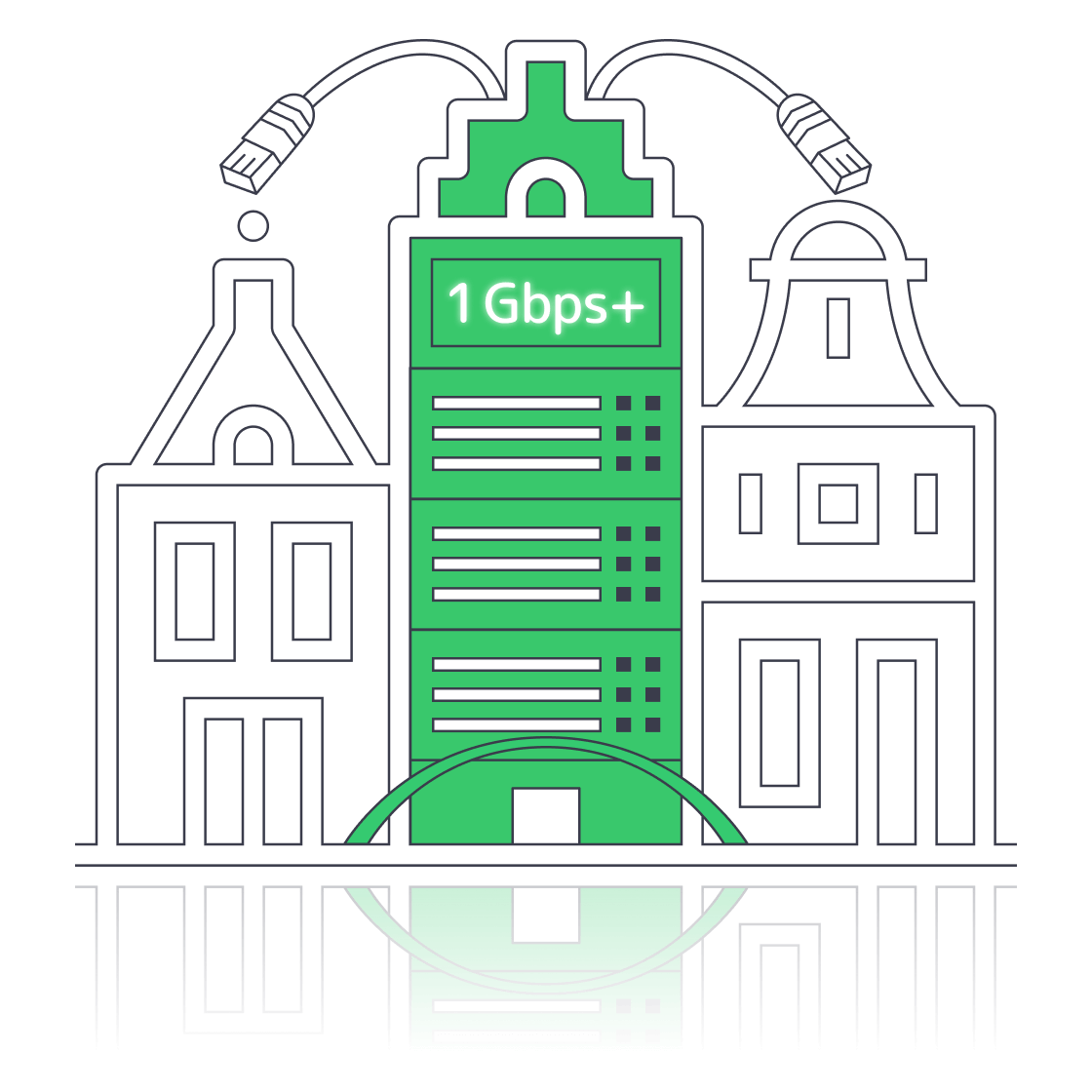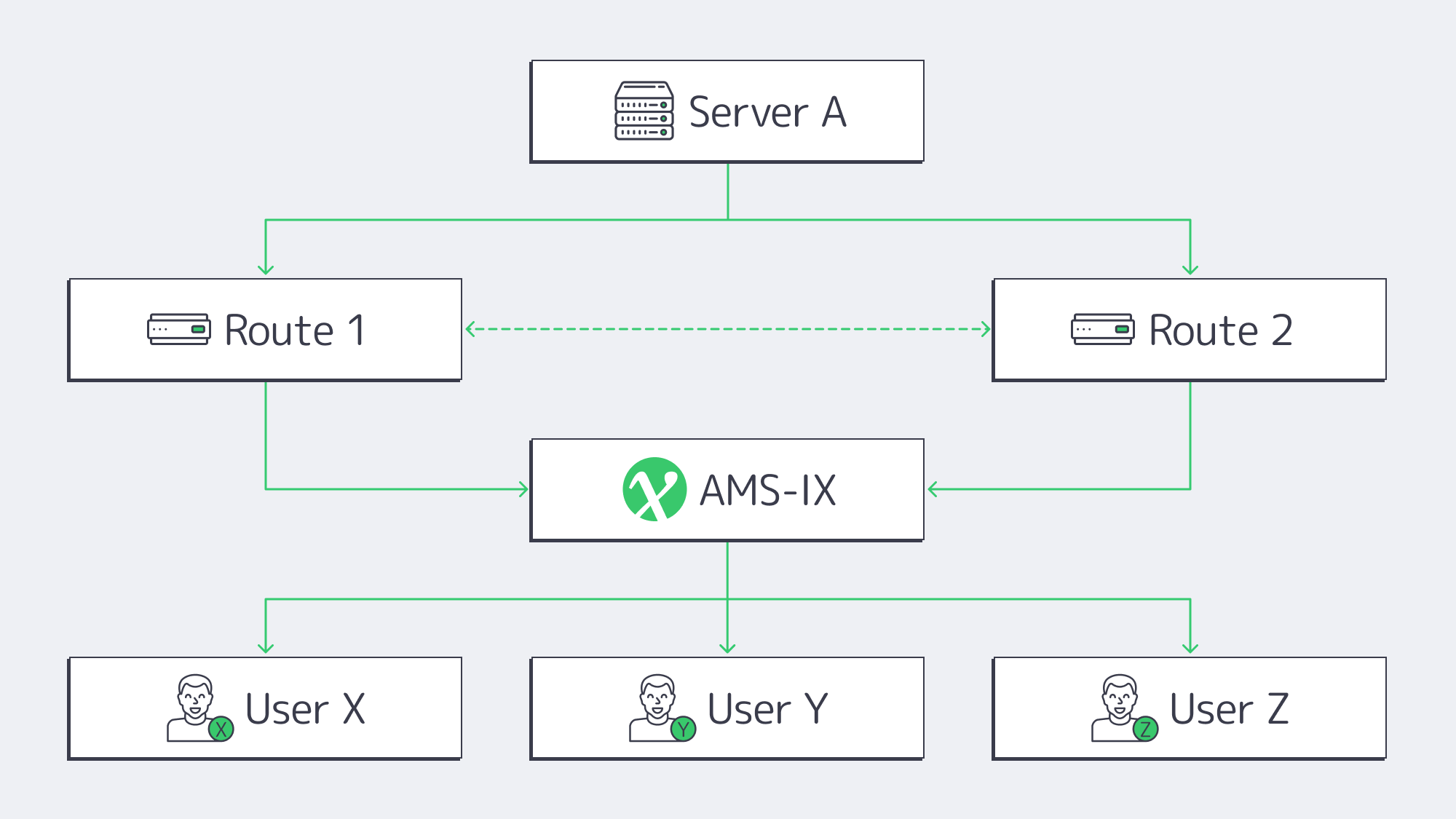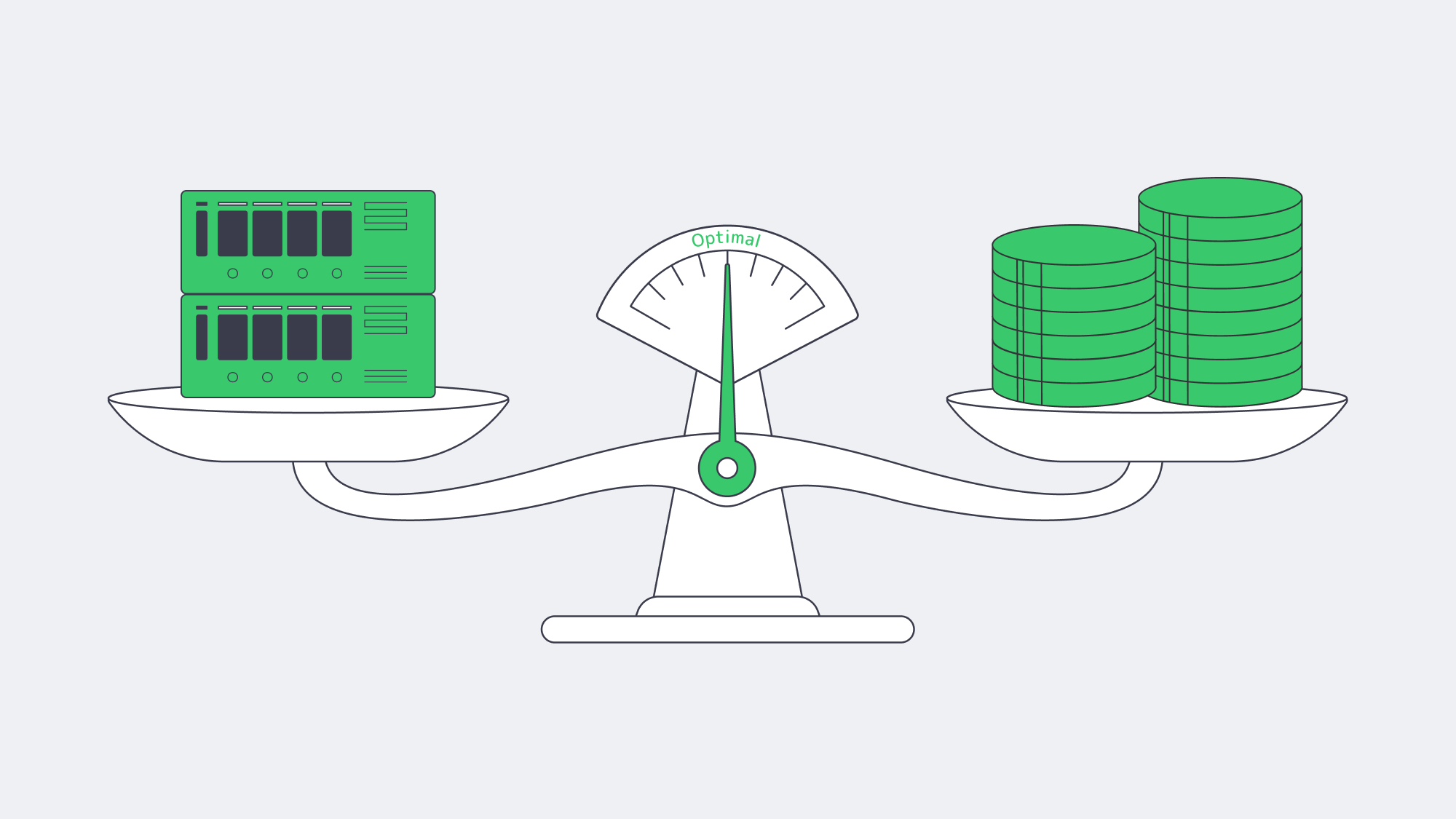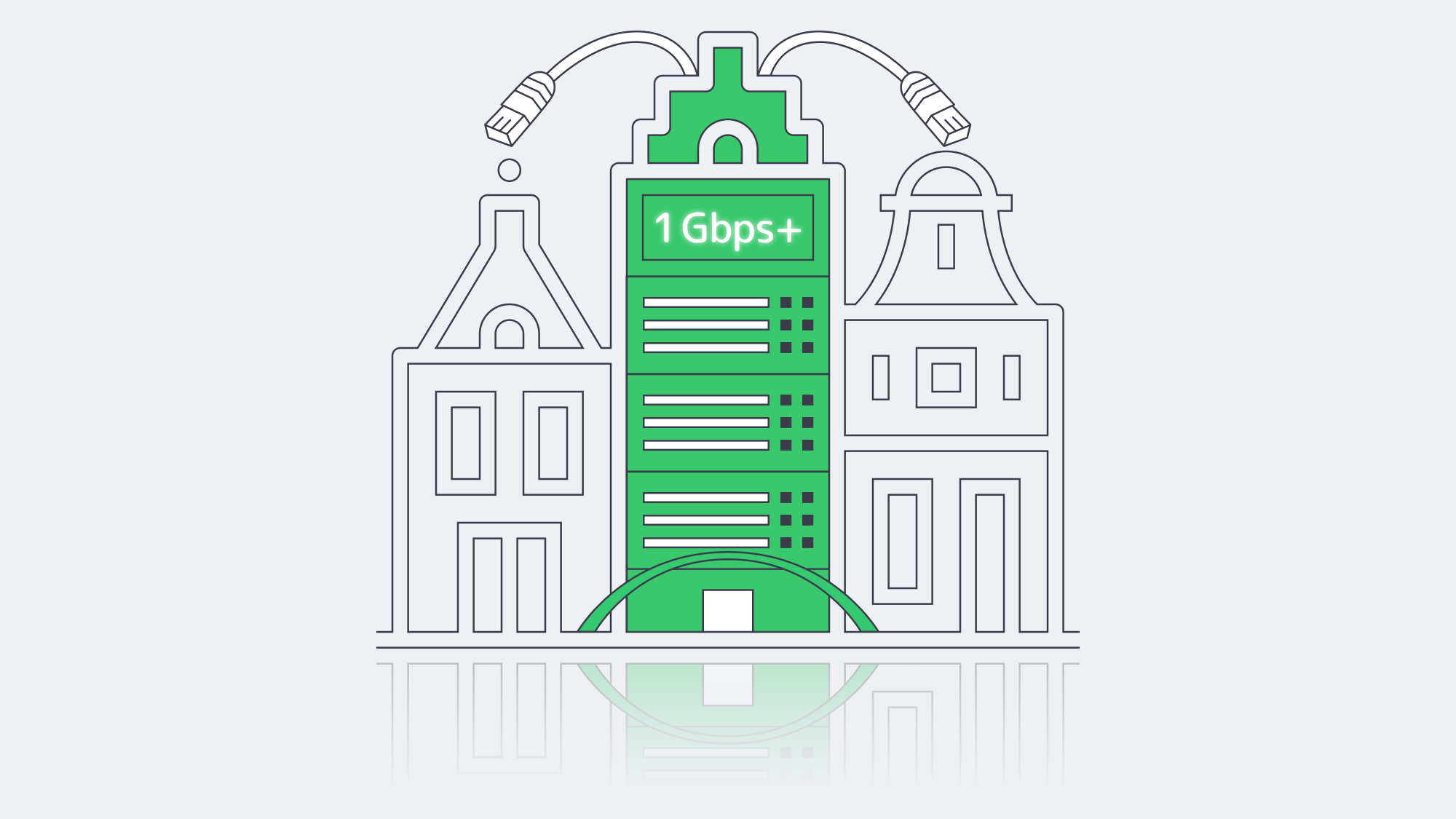Blog

Finding an Unmetered Dedicated Server Plan in Amsterdam
A decade ago, it was necessary to count every gigabyte and keep your fingers crossed that the 95th-percentile spike on your invoice wasn´t horrendous in order to plan your bandwidth. For video platforms, gaming labs, and other traffic-heavy businesses, this was a genuine gamble and required calculus to keep within budget limitations. These days, thankfully, the math is no longer a caveat. Fixed monthly prices and hundreds of terabytes are on tap thanks to the AMS-IX exchange based in Amsterdam. The high-capacity network serves as the main crossroad for most of Europe and can hit a 14 Tbps peak.[1]
Definition Matters: Unmetered ≠ Infinite
Jargon can confuse matters; it is important to clarify that unmetered ports refer to the data and not the speed. Essentially, the data isn’t counted, but that doesn´t mean that the speed is unlimited. If saturated 24 x 7, a fully dedicated 1 Gbps line should be capable of moving 324 TB each month. That ceiling climbs to roughly 3.2 PB with a 10Gbps line. So you need to consider how much headroom you need, which could be considerable if you are working with huge AI datasets or operating a multi-regional 4K streaming. If you are using shared uplinks, it is wise to read through the service agreements, one line at a time, or you will find out the hard way how “fair use” throttle affects you:
- Guaranteed Port: Our Netherlands-based unmetered server configurations indicate that the bandwidth is solely yours, with language such as “1:1 bandwidth, no ratios.”
- Zero Bandwidth Cap: The phrase “reasonable use” should raise alarm bells. It often means the host can and will slow you at will. If limitations are in place, look for hard numbers to understand potential caps.
- Transparent overage policy: The legitimacy of an unmetered plan boils down to overage policies. Ideally, there should be an explicit statement, such as “there isn’t one.”
Amsterdam’s Low-Latency Routes and AMS-IX Multi-Path

The infrastructure provided by Amsterdam’s AMS-IX connection unites over 880 networks operating at the 14 Tbps mark. Theoretically, that sort of power can serve almost a million concurrent 4K Netflix users at once. Traffic is distributed via multiple carrier-neutral facilities, automatically rerouting if there is any delay at a single site. Hiccups. Fail-over is afforded without ticket requests or manual BGP surgery when providers peer on at least two physical AMS-IX points at a time.
We at Melbicom, rack into 3 IXPs and operate via 7 Tier-1 transit providers, so flow is easily automatically shifted should a cable cut on one path appear for whatever reason. The shift occurs in a single-digit-millisecond ping across Western Europe with respectable latency round-trip at all times. New York and back pings in under ~75 ms, ideal for those providing live feeds that must meet low glass-to-glass latency demands.
Saturated Gigabit Workloads
| Port speed | Concurrent 4K streams* | Max data/month** |
|---|---|---|
| 1 Gbps | ≈ 60 | 324 TB |
| 5 Gbps | ≈ 300 | 1.6 PB |
| 10 Gbps | ≈ 600 | 3.2 PB |
*In accordance with Netflix’s 15 Mbps UHD guideline.[2] **Theoretical, 100 % utilization.
Streaming & CDN nodes: According to Cisco’s forecasts, video streaming is expected to make up more than 80 % of global IP traffic in the years to come.[3] Currently, the edge boxes feeding Europe max out nightly at 10 Gbps, and live streaming of a single 4K live event at 25 Mbps hits a gigabit with just 40 viewers.
AI training bursts: GPT-3 by OpenAI used ≈ 45 TB of text before preprocessing.[4] To put things into perspective, copying such a dataset takes around five days across nodes on a 1 Gbps line or half a day on a 10 Gbps line. Without GPUs bolstered by generous unmetered pipes, parameter servers can easily spike during distributed training.
Genuine Unmetered Dedicated Server in the Netherlands Checklist
- Dedicated N Gbps + port in writing.
- SLA with no traffic ceiling and no “fair use” policy unless clearly defined.
- Dual AMS-IX peerings (minimum) and diverse transit routes.
- Tier III or IV facility to ensure sufficient power and cooling redundancy.
- Real-world test file demonstrates that it hits 90 % of the stated speed.
- Complimentary 24/7 support (extra ticket fees are common with budget plans).
If the offer doesn´t meet at least four out of the six above-mentioned criteria, then steer clear because you are looking at throttled gigabits.
Striving for Price–Performance Equilibrium

Search pages are littered with “cheap dedicated server Amsterdam” adverts, but headline prices and true throughput can be widely disparate. You have to consider the key cost lenses to know if you are getting a good deal. When you hone in on the cost per delivered gigabit, a €99/month “unmetered” plan that delivers 300 Mbps after contention works out pricier than a plan for €179 that sustains 1 Gbps. Consider the following:
- Effective €/Gbps – Don´t let port sizes fool you, sustainable speed tests are more significant.
- Upgradability – How easy is it to bump from 1 to 5 Gbps next quarter? Do you need to migrate racks? Not with us!
- Bundles – The total cost of ownership may include hidden add-ons, Melbicom bundles in IPMI, and BGP announcements, keeping costs transparent.
The sweet spot for the majority of bandwidth-heavy startups is either an unmetered 1 Gbps or 5 Gbps node. Either 10 Gbps or 40 Gbps is required for traffic-heavy endeavors such as gaming and streaming platforms that are expecting petabytes. With U.S metros, costs can be high, but the carrier density on offer in Amsterdam keeps tiers cheaper.
A Future-Proof Roadmap: Carving a path from 10 G to 400 G
The rise of AI and ever-increasing popularity of video has meant that AMS-IX has seen an eleven-fold jump in 400 Gbps member ports during last year.[5] Trends, forecasts and back end capacity dictate all points towards 25 G and 40 G dedicated uplinks becoming the new standard. At Melbicom, we are prepped and ahead of the curve with 100 Gbps unmetered configurations and hints at 200 G on request.
With our roadmap developers can rest assured that they won’t face detrimental bottlenecks with future upgrade cycles because it is waiting and ready to go regardless of individual traffic curves. Whether your climb is linear with a steady subscriber base or lumpy surging at the hands of a viral game patch or a large sporting event, a provider that scales beyond 10 Gbps is insurance for a steady future.
Further Factors Summarized
Don’t overlook latency: High bandwidth means nothing if there is significant packet loss; low latency is vital to be sure to test both.
Security is bandwidth’s twin: A 200 Gbps DDoS can arrive as fast as a legitimate traffic surge. Ask if scrubbing is on-net or through a third-party tunnel.
Greener operations have better uptime: Megawatt draw is monitored by Dutch regulators and power can be capped, causing downtime. Tier III/IV operators that recycle heat or buy renewables are favorable, which is why Melbicom works with such sites in Amsterdam.
Putting It All Together

Amsterdam’s AMS-IX is the densest fiber intersection on the continent; the infrastructure’s multipath nature ensures that a single cut cable won’t tank your operations. For a dedicated server that is truly unmetered, you have to go through the SLA behind it with a fine-tooth comb. Remember proof of 1:1 bandwidth is non-negotiable, look for zero-cap wording, and diagrammable physical redundancy. Additionally, you need verifiable, sustained live speed tests; only then can you sign a contract with confidence that your server is genuinely “unmetered.”
Ready for unmetered bandwidth?
Spin up a dedicated Amsterdam server in minutes with true 1:1 ports and zero caps.